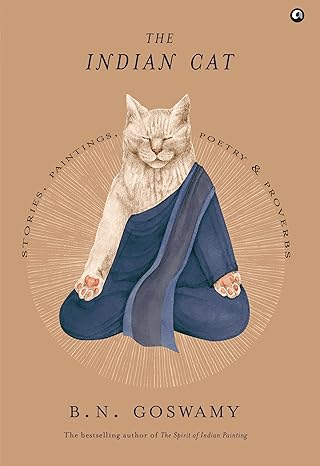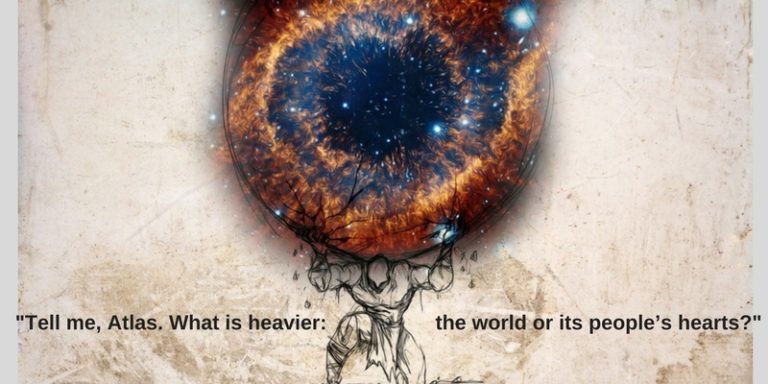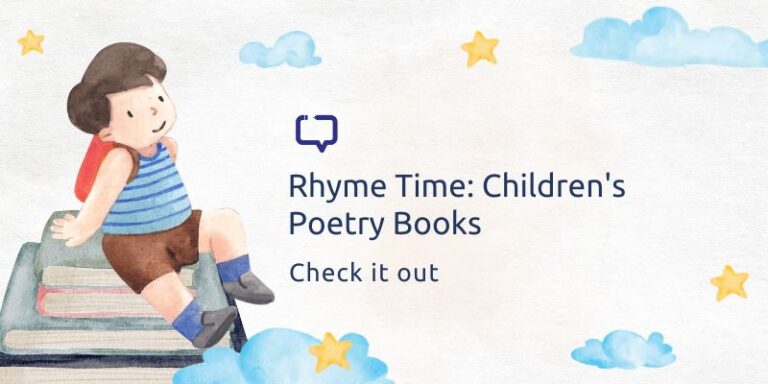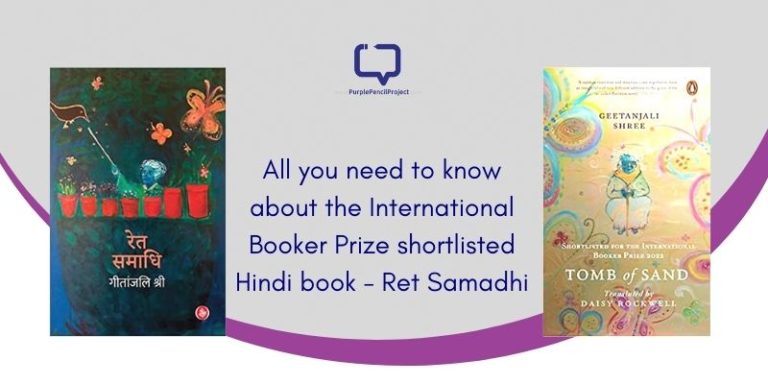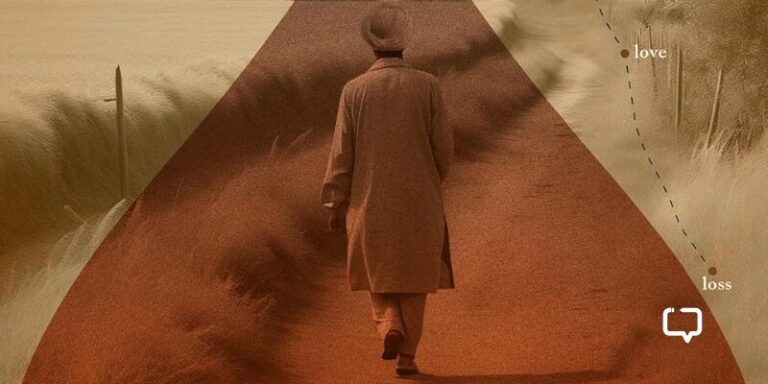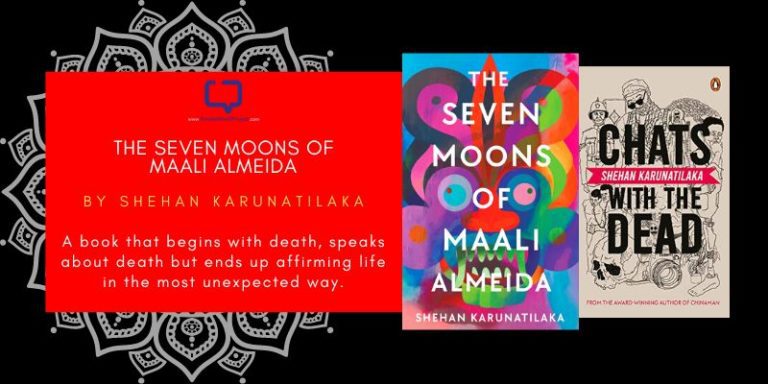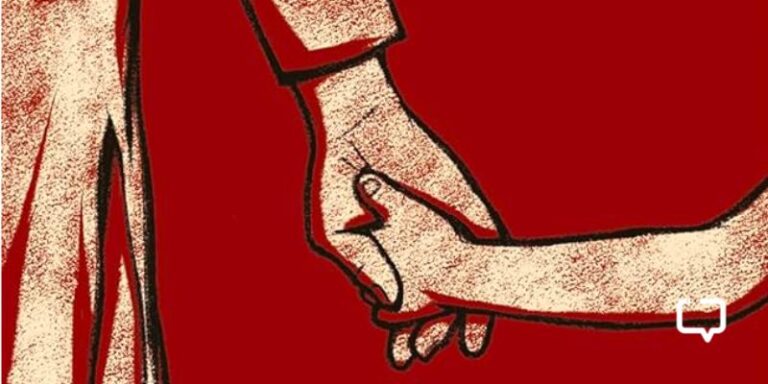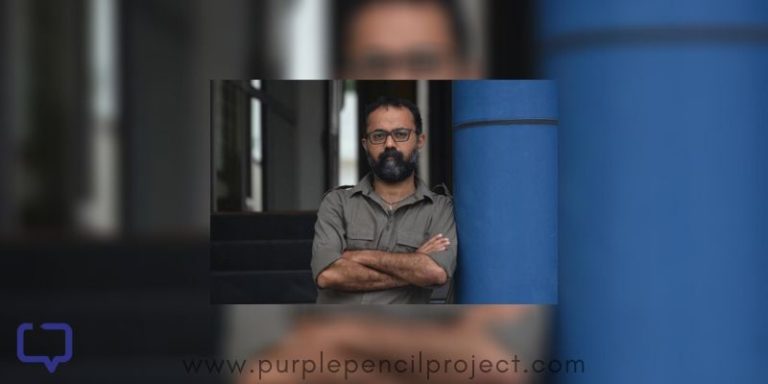Sourima Rana reviews The Indian Cat by B.N. Goswamy (Published by Aleph Books, 2023)
At the very outset, B.N. Goswamy states that he is not a cat lover, merely an observer of their habits. The Indian Cat is a departure from his usual books on Indian art, history, and culture – the product of the awareness that art historians have close connections of affection with cats. It is heart-warming but not astonishing thus, how the Cat, an enigmatic animal who has always aroused conflicting feelings in humans, has managed to make itself the subject of the book, from even a non-ailurophile.
We encourage you to buy books from a local bookstore. If that is not possible, please use the links on the page and support us. Thank you.
Goswamy’s Writing
Using lucid language, B.N. Goswamy divides the book into 5 parts – an introduction to cats in world history, followed by their very Indian presence and mannerisms in stories, paintings, poems, and proverbial sayings. Peppered with relevant quotes from a variety of Persian, Bengali, and Urdu authors, the hazy silhouette of a cat begins to take shape.
What follows is an explication of the mystery that is a cat – mentioned in the dedication as “a gentle poem on four feet”. Everyone has come across cats in their lives, some have been fortunate enough to live with one – and hence to observe the distinct behavioural mannerisms of cats – dubbed “cattitude” in popular language.
Cats have always had an ambiguous reputation – revered as Gods in ancient Egypt, in Islamic culture, by the Greeks, and Buddhists, and even as the holy vehicle of the Hindu Goddess of fertility, Shashthi. However, they have also simultaneously been associated with negativity, and superstitions – known for their manipulative nature, their inherent cleverness bordering on evil designs, their pretense and hypocrisy, and their association with diseases. Like a proper feline, cats have always walked on a thin tightrope, balancing themselves between opposing narratives and trying to escape categorization, unscathed.

In the course of his writing, B.N. Goswamy talks about concepts like Marjara Nyaya and Marjara Vrata, the former being the Cat’s personality of being unique and unashamedly itself without the need for human masks, while the second equates them with traitorous holy men/sages and politicians, who are pretentious hypocrites.
Goswamy makes a cat the mouthpiece in the proverb section of the book, to defend its own kind from the unfair accusations of humans. Most proverbial sayings are used to malign the personality of cats – to highlight their avarice, their tendency towards selfishness and jealousy, their disdain for affection but desire to be worshipped, their apparent meekness but the roguish nature underneath, etc.
Similarly, the “Clutch of Cat Stories” shows how in the morally instructive tales of varied cultures, cats are depicted as clever antagonists, whose ultimate failure heralds the utopic triumph of good over evil.
A potpourri collection of stories – from the Buddhist Jataka Tales, to the Panchatantra, the Sanskrit Brihatkatha to the Persian Tuti Nama – the cats show their cleverness, which either gets them applauded or denounced and punished, based on whether it helps others or harms them; and the supporting menagerie helps instruct one with the timeless nuggets of moral wisdom.
Recommended Reads: Grants and Awards for Debut Writers : 10 Great Opportunities not to be missed
Goswamy presents the attitudes towards cats as it is, without overriding them with his own subjective views. It thus feels like an interesting patchwork narrative of vivid, entertaining stories, where the cat inevitably makes a presence, and brings a smile upon the reader’s face.
The best part of the book is the poetry section. Entitled “Gleanings”, it is a choice selection of poems by various cat lover poets, in various Indian languages translated by Goswamy himself. Mir Taqi Mir’s poems equate the feline with the figure of the enchantress who’s ever-present. He highlights the differences between behaviours of cats, even sister kittens, and how a cat leaves an indelible pawprint of affection upon the owner, remembered fondly even after its demise.
The other poets too show a remarkable observance of cattitude – capturing their playful moodiness, adorable behaviour, and astute cleverness – describing them in the form of blazons, even associating them with the sexual charm and graceful guile of women. While the stories were largely instructive, the poems are like a breath of fresh air, amusing the readers with word paintings of delightful sequences of actions by cats.
The 58 paintings selected are mostly from the Mughal period, with a few by Bengali artists like Jamini Roy. Goswamy explains the paintings briefly, and it is a treat to the eyes, the various ways cats are depicted in them, across times and settings.
They appear centrally in most paintings, or even from the corners draw attention to themselves by their attitudes. They are often portrayed as adored, spoiled; adorned in royal gold collars and dainty regal robes, attaining an elegant demeanour – as they act as protective charms, guarding newlyweds and babies alike.
Often, they show their irresistible curiosity, always poking their nose into all the action occurring in the paintings. But most importantly, they appear to be able to be companionable creatures, who simultaneously retain their own needs for solitude.
They show contentment, as well as strategizing energy; they are an emblem of determination, patience, and cunning. It is only in a few stories that they are once again negatively associated with politicians and fake priests, which is countered by their depiction alongside spiritual Gods and mothers.
Goswamy felt the need to depict the status of cats in Indian culture, mainly because it had not been documented by anyone before. Extensive records remain for Greek and Egyptian civilisations’ reverence for cats, none for our own can be found.
The end product becomes a truly enjoyable book, a coherent mixture of the various components of culture – paintings, poems, proverbs, and stories – all of which seek and both achieve to capture the attitudes of Indian cats, their status in our society, as well as fail to truly define what a cat is in essence. What it means to be a cat remains open-ended, like my favourite quote from the book –
Favourite Quote
“A cat is a fallen piece of cloud
rolled up in wakeful sleep.
A mixed metaphor
descending the stairs
with a questioning tail.”
~ S. Ganapathi in The Indian Cat by B.N. Goswamy
Have you read this enjoyable book on Indian cats? What do you think of it? Drop a comment below and let us know!







